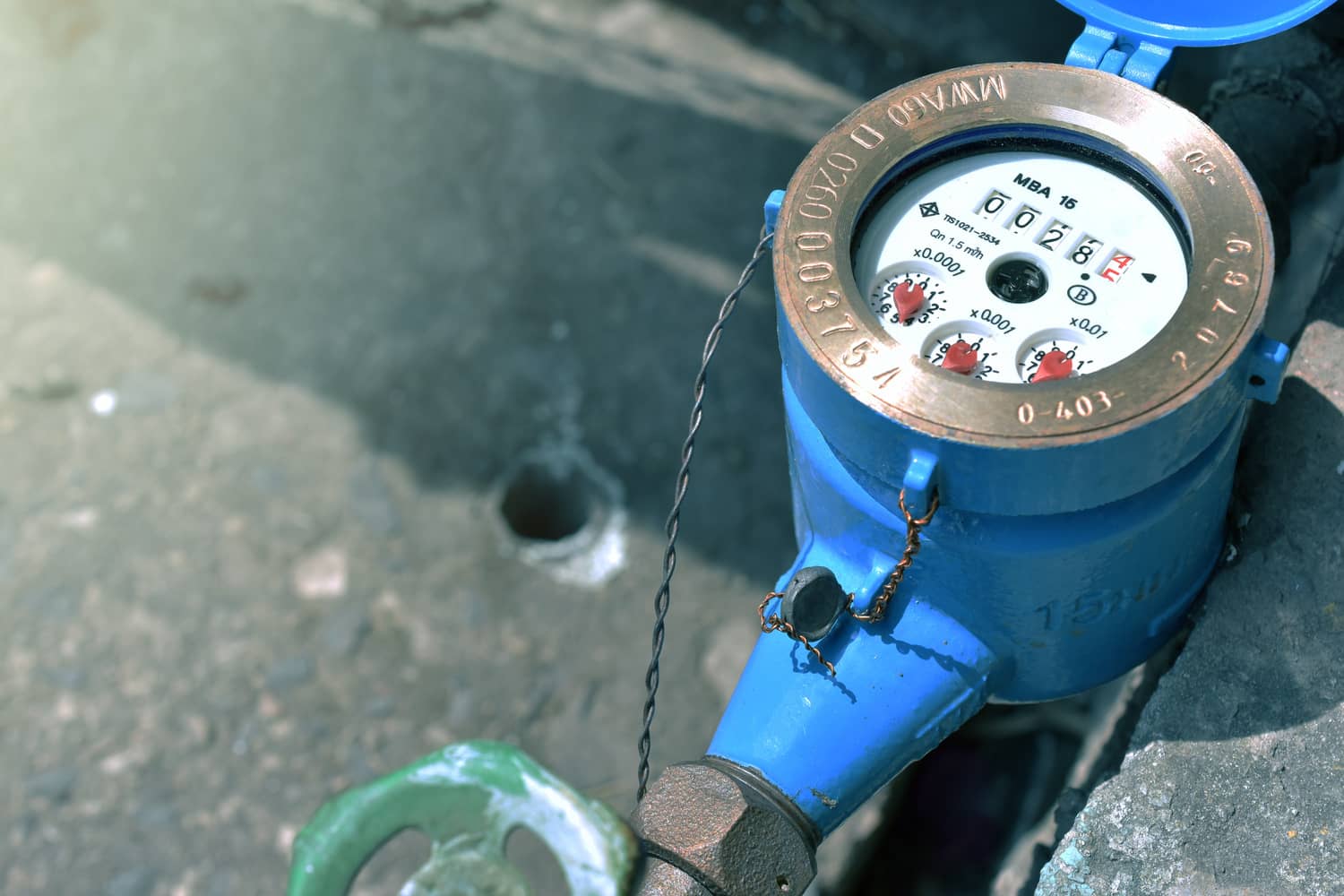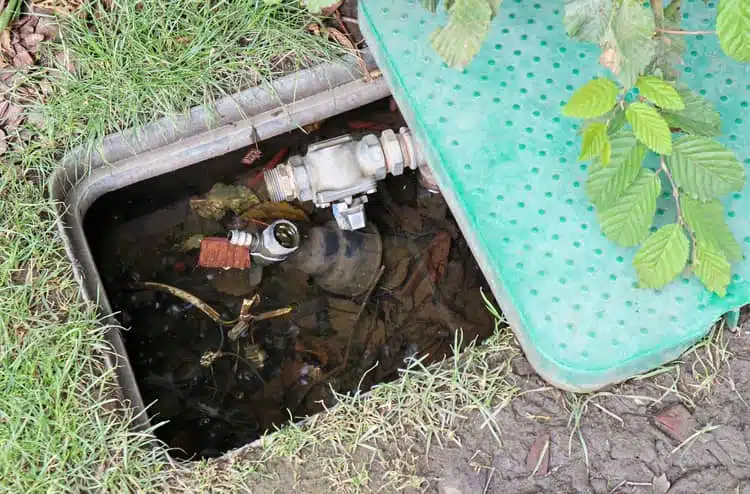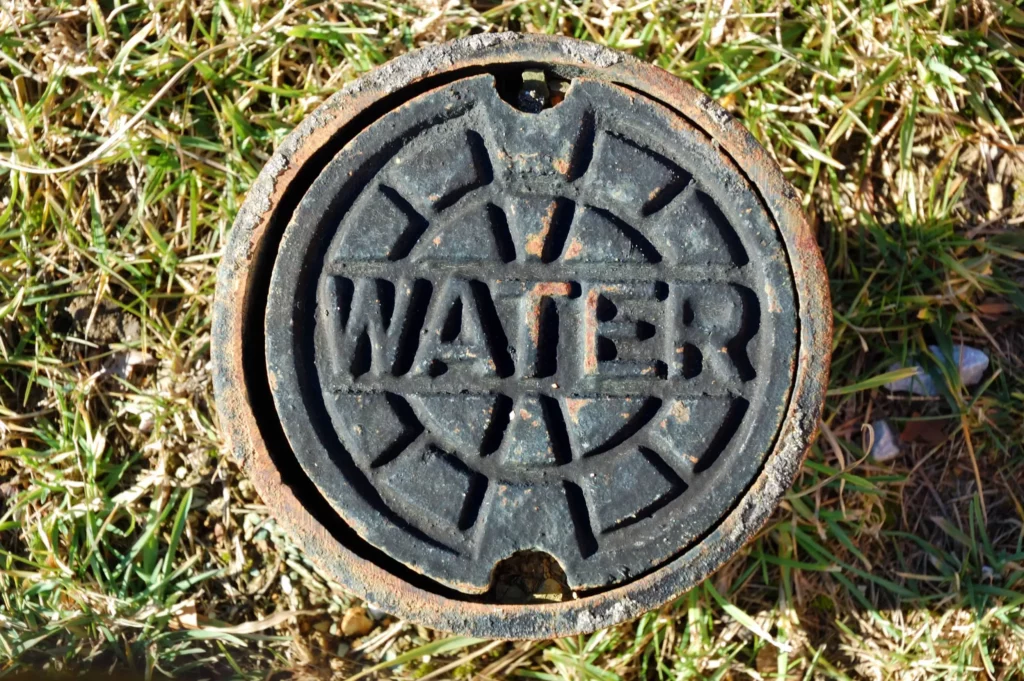
When it comes to owning a home, you need to know all of the details regarding where everything is located and what it does for your home. Knowing the inner and outer workings of your home is key to properly maintaining your home. If you ever get a water bill that doesn’t make sense, knowing where the water meter is will help you troubleshoot if you have a leak or running water somewhere. Where is the water meter located? In most cases, the water meter is located close to the street at your property line.
Let’s take a look into more details regarding your water meter.
What Is A Water Meter?
Believe it or not, two types of water meters could be installed on your main sewer line. Typically, one type of water meter is used for residential homes. The other water meter is known to be more complex and tougher to read. Let’s take a look below at what the two types of water meters are.
- Straight reading meter – You will relate this type of water meter to the odometer on your car. Once the water is turned on and starts flowing, the hands on the meter start to rotate. They are measuring the amount of water used in cubic feet. To calculate how many gallons of water are used take the previous amount from your latest water bill and subtract it from what is current on the water meter. Then you will multiply the number by 748 to get the gallons that were used.
- Round reading meter – This type of water meter is way more complex than the straight reading meter. It contains 6 dials that will represent various levels of cubic feet. You start with the 100,000 dials and read it clockwise to the 1,000 dials. The dials are 100,000, 10,000, 1,000, 100, 10, and 1. An arrow will point to the number on each dial. The lower number on the dial is the one you will record. To calculate the water usage with this meter, take the previous month’s number and subtract it from the current number. The 1 cubic foot dial is what you will use to determine if there is a leak.

What Are The Steps For Finding My Water Meter?
Finding your water meter should be fairly simple. Let’s take a look at the steps to follow to find your water meter.
- Find the hose bib – Your hose bib will be located on either side of the exterior of your home.
- Check the street – Look for a cement, metal, or plastic lid that covers a concrete or strong plastic box in your yard. Typically it is located a few feet from the sidewalk.
- Remove the excess growth – In some cases, the grass or weeds have taken over the lid of your water meter. Remove the overgrowth so that you have access to the lid. Use a screwdriver or other tool to pop the top off of the box.
- Still can’t find it – Check the exterior of your home for the main water line. Also, consider searching where the other utilities of your home are located. The entry points are typically in similar spots.
- Look for the main water shut-off valve – In most cases, the shut-off valve is located on the exterior of your garage. It can also be found in your basement. The basement location is likely due to the potential of freezing temperatures.
Other Recommended Maintenance
Now that you know how to find your water meter, you can read up on how to read your water meter. Being able to understand the digits and dials on your water meter will allow you to keep track of your water usage and determine if there is a leak.
Next, if you happen to discover a leak, it is a great idea to understand how deep the sewer line is buried. This information could be huge when you are looking to hire a contractor to repair. Most residential water and sewer lines are buried between 5 and 6 feet deep. Additionally, a city sewer line is buried 12 feet deep.
Lastly, if you are experiencing a water pressure issue, it might not be due to a leak. Read up on how to adjust the water pressure regulator so that you can get more out of your plumbing. Consequently, if you aren’t sure what to do, call on a master plumber.

When Do I Call A Professional?
It is important to locate your water meter for your home. Having the location allows you to track your water usage and compare it with your water bill. If the numbers are way off, you likely have a leak somewhere. Call on your local home inspection team to get a sewer scope done to determine if there are leaks in your plumbing.
Conclusion
The water bill comes from your local municipality. However, that doesn’t mean they are always accurate or correct. Although they send an employee out to read and record the numbers, does not mean everything is precise. Knowing where the water meter is located allows you an opportunity to cross-reference the water bill. Consequently, if you notice a severe change in your water bill, call on your local home inspection team to assist. Reach out to Boggs Inspection Services can check your plumbing during a home inspection in the Olympia, Washington area.



